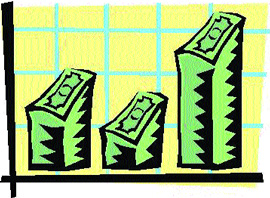Explaining Financial Benchmarks

Ever hear someone say that they made 12% on their investments last year and wonder if that was good?
Every business day the news reports the movement of the TSE, Dow Jones Industrial Average and the S&P 500 Stock Price Index. Feel like you need a translator? I hope what follows will help make some sense of these numbers and help you follow the business news.
An index, also called a benchmark, is a method of tracking the performance of a specific market. In the simplest terms, the values of items in a given market are added up and a starting point is established. From that point the values are tracked periodically. If the total rises, then the change is placed over the starting point total and a percentage increase is obtained. Keep going it gets easier.
 A good example is the Consumer Price Index (CPI). The actual calculation of this index is somewhat complex but the idea behind it is simple. Over time, the same group of goods are purchased and the total cost of the goods are calculated. An increase represents inflation while a decrease indicates deflation.
A good example is the Consumer Price Index (CPI). The actual calculation of this index is somewhat complex but the idea behind it is simple. Over time, the same group of goods are purchased and the total cost of the goods are calculated. An increase represents inflation while a decrease indicates deflation.
For example, every year on the first day of school you could purchase the same goods and services and total all of the costs. If the cost were totaled the first year at $100 and the next year at $110 then you would be facing 10% inflation. These calculations would then be presented formally to your parents and an increase in allowance could be pursued.
The TSE 300 Composite Index is a stock index based on the market values of 300 stocks that trade on the Toronto Stock Exchange (TSE). The same 300 stocks are valued constantly through every trading day and the index is reported as an ever-changing measure of the markets through the day. An upward trend indicates an overall increase in the stock prices being tracked while a decrease indicates a downward trend in overall stock prices.
Just as Canadian Stocks are compared to the performance of the TSE 300, US stocks can be compared to the Standard and Poor’s (S&P) 500 Stock Price Index or the Dow Jones Industrial Average (DJIA).
The S&P 500 Index is based on the market values of 500 leading stocks. The bulk of which trade on the New York Stock Exchange (NYSE). The rest trade on the American Exchange (AMEX) or the over-the-counter market (OTC).
The Dow Jones Industrial Average (DJIA) is probably the most recognized exchange in the world. This index is based on the market prices of 30 large companies that trade on the NYSE.
Written for Faze by Doug Sherrington, TD Financial Advisor in Toronto

Comments are closed.